- Daily & Weekly newsletters
- Buy & download The Bulletin
- Comment on our articles
The House of European History in Brussels: A museum reflecting on a shared past and present
After recently welcoming its one millionth visitor, the House of European History is stepping up its message to the public that it is a museum for all ages and all nationalities.
From youngsters to older generations, locals to the international community, the free facility is an ever-evolving space for reflection on both the history and present of Europe.
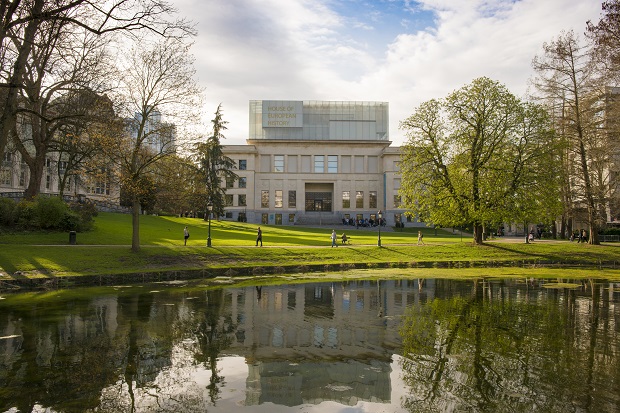
It is housed in the striking Art Deco Eastman Building in Brussels’ Parc Leopold with a beautiful façade that epitomises the stylistic aesthetic of the movement. Lying within the shadow of the EU quarter, the museum enjoys a green and secluded location.
The flagship project opened in 2017 with an ambitious mission to contribute to an understanding of Europe’s shared past. Focusing on the 19th and 20th centuries, its vast permanent exhibition boasts modern scenography and interactive installations. Financed by the European Parliament and Commission, an independent advisory board of academics, museologists and historians oversees its multi-perspective content.
Originally commissioned by the philanthropic American founder of Kodak George Eastman, the 1935 building served as a dental clinic for disadvantaged children. A full-scale renovation transformed it into a modern and airy museum, adding a contemporary extension that fills its former courtyard and floats above the treeline of the surrounding park.
Inside, once past security, staff are on hand to direct visitors around the building where they can pick up an audio-guide tablet, available in 24 languages. An additional programme of guided tours for individuals and groups is fully recommended.
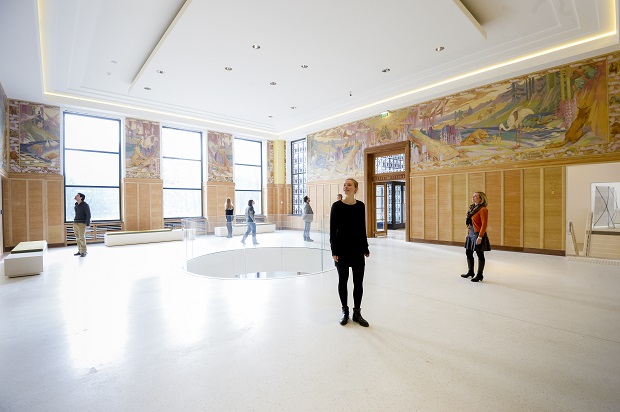
I meet up with Jitka Mlsova, a curator at the museum, and my guide for the day. We first take a peek at the former clinic’s waiting room that has been carefully restored to preserve period details, such as the animal frieze inspired by the Fables of La Fontaine. Jitka points to a space which once contained bird cages to distract the children from the noise of treatments being carried out.
Temporary exhibitions fill the first two floors and are dedicated a range of subjects. The museum is preparing a new exhibition entitled Presence of the Past, that will open in March, focused for the first time on photography.
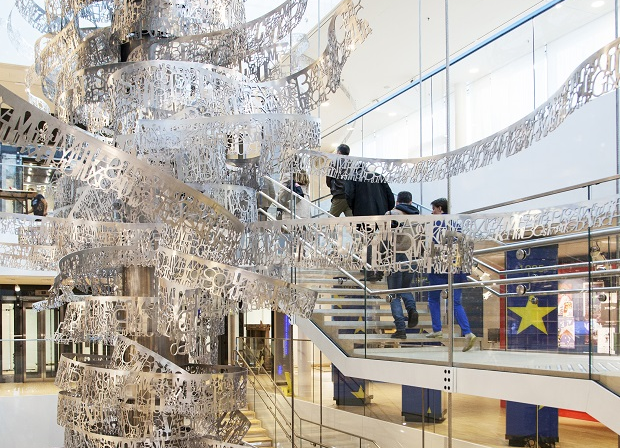
A central space between the old and new buildings is filled by an arresting and symbolic metallic installation, the Vortex of History (pictured). Designed by an artist of Czech origin, Boris Micka, the 25m-high sculpture of letters stretches out onto each floor with word branches of the various historical periods.
The permanent exhibition begins on the second floor. As a starting point, the myth of the Phoenician princess Europa represents the continent’s shared roots, before ancient and contemporary maps and globes underline its ever-shifting borders.
While avoiding individual histories of states and regions, cultural heritage in the broadest sense is explored through 12 hallmarks of European civilisation that remain relevant today, such as democracy and rule of law.
Next, the industrial revolution that fuelled Europe’s path to global power is illustrated effectively by one of the steam hammers that powered the milling industry in Britain. An accompanying soundtrack evokes the repetitive and staccato sounds of the age’s whirring engines.
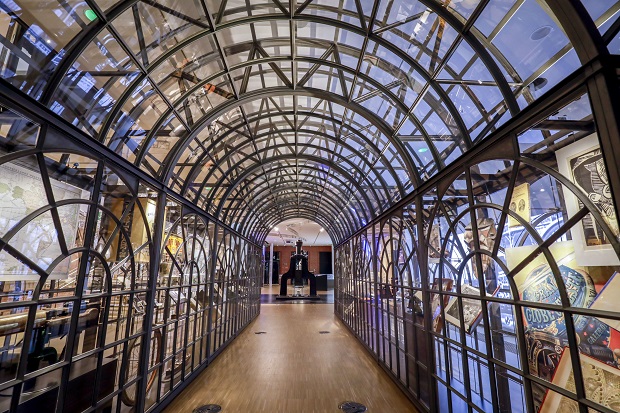
Although it does not have its own dedicated section, the important topic of colonialism is shown in numerous exhibits. A metalwork tunnel features European inventions on one side – including trains, the telephone and cinema – contrasting with posters, photos, treaties and sculptures on the other side, serving as testimony to the extent of Europe’s colonial imperialism.
The destruction of World War One is shown in moving original films and displays of the detritus of war, from armaments to soldier’s graves. It transformed the century that followed, giving rise to democracy, pacifism, totalitarianism and communism. The contrast between Stalinism and National Socialism leads to another major section on World War Two, tracing the horrors from the perspective of civilians, including Shoah, and the ruined state it left Europe.
Mlsova explains: “After the dark days of conflict and social turmoil, on floors four and five, we take a lighter approach to post-war economic growth, consumerism and the process of European integration. The change in tone is evoked through brighter exhibits and more open spaces.”
A row of opposing pillars outline the two ideologies of capitalism and communism within the context of the Cold War. As one of the many interactive elements to exhibits, youngsters in particular are asked what they like or dislike in each model and contrasting levels of state intervention.
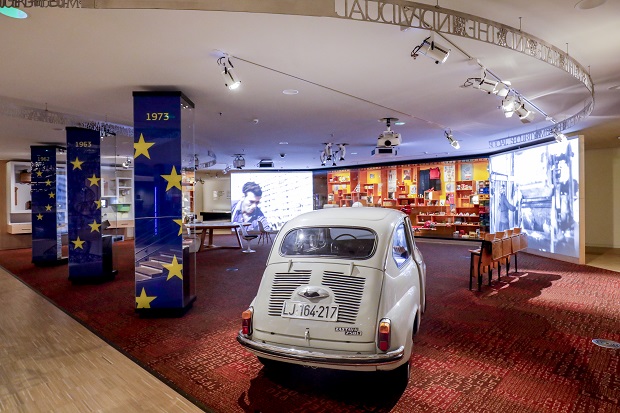
The expansion of travel opened up the continent to many. A Zastava car manufactured in Yugoslavia but licensed by Fiat in Italy, signifies the general introduction of paid leave for much of Europe’s population and how trading found a way to cross borders. However, the choice of holiday destination would depend on whether you resided in Eastern or Western Europe.
In the section Shattering Certainties, the exhibition tackles the challenges of industrial collapse, the energy crisis and political ideologies such as Thatcherism in the UK and the fall of dictatorships in the Southern Europe. Along with the emergence of the Solidarity movement in Poland in the 1980s, the fall of State Socialism and the Berlin Wall are depicted in a bank of TV screens broadcasting flashing images from the history-changing moments of regime changes.
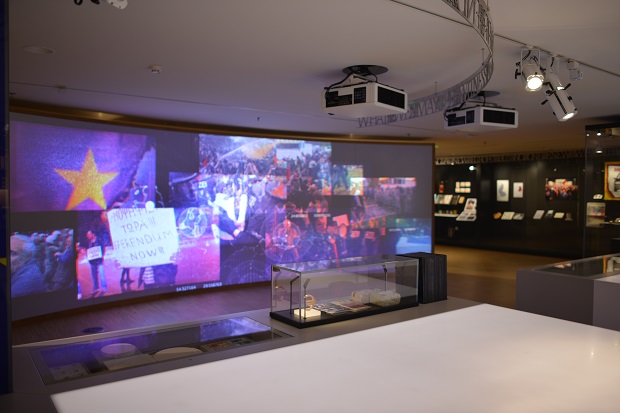
The Europeanisation section reflects on achievements such as the introduction of the euro, enlargement of the EU and consequent challenges. The establishment of the Schengen Area in 1995 brought free movement and opportunities, with an exhibit highlighting the Erasmus programme for students. However, the European Union is also shown to have fallen short in its response to some of the crises of recent decades. War in the Balkans, the economic crisis in Greece and migration highlight the institutions’ limitations. The personal tragedies of migrants’ journeys are revealed, from the point of view of a Somalian refugee arriving in Lampedusa to a child’s life jacket poignantly on display.
Mlsova concludes the tour on the sixth and final floor, pointing up to the open sky through the glass roof. “Here we invite visitors to reflect on Europe’s difficult past and current or contemporary issues on the continent.” Alongside inviting seating and digital installations reinforcing the notion of movement around the continent, is a colourful children’s corner for special family trails.
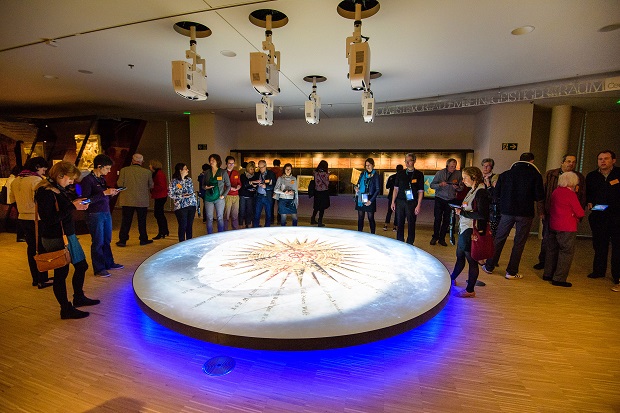
Returning to the ground floor via transparent glass lifts is a slightly surreal experience as you whizz through two centuries of momentous moments in history. Ultimately, the museum’s story is one of struggle, fight for freedom and a collective drive for prosperity and civic values.
In addition to guided tours and Tuesday lunch tours, a full programme of events is scheduled throughout the year.
House of European History
Open daily, free entrance
Rue Belliard 135
Brussels

















